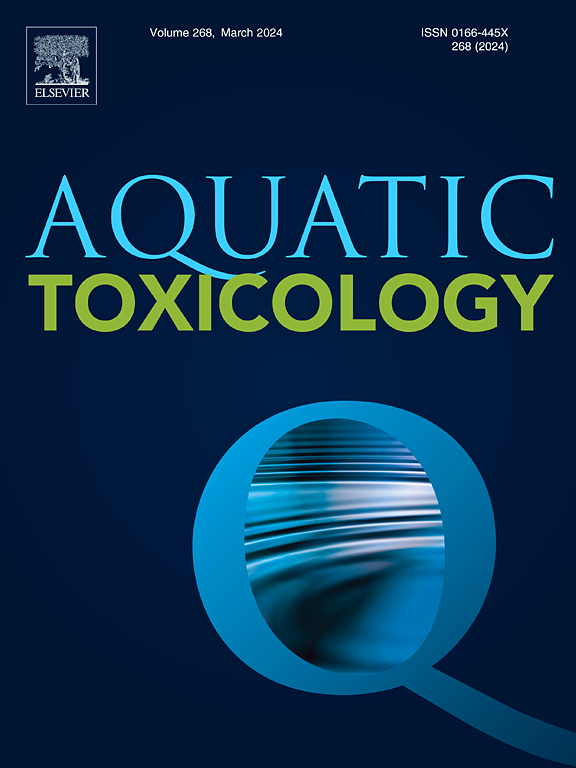增强水生环境中的生态感应:使用 YOLOv5 自动识别鱼类跳跃行为。
IF 4.1
2区 环境科学与生态学
Q1 MARINE & FRESHWATER BIOLOGY
引用次数: 0
摘要
当代鱼类行为学研究主要研究水下环境。然而,由于水生生态系统错综复杂,水下观察鱼类行为往往会受到干扰。将观察视角从水下转移到水上,可以更直接地评估鱼类的生理和栖息地条件。在这项研究中,我们利用 YOLOv5 卷积神经网络目标检测模型开发了鱼类跳跃行为(FJB)识别模型。模型训练和验证的数据集由 877 张鱼类跳跃图像组成,这些图像是通过水库中的摄像头拍摄的。在对模型进行训练和验证后,进一步在真实水生环境中测试了其识别准确性。结果表明,YOLOv5 在检测水花方面优于 YOLOv7、YOLOv8 和 YOLOv9。经过 50 次训练后,YOLOv5 在验证集上的精确度和召回率均超过 97%,F1 分数超过 0.9。此外,我们还设计了一个增强型 YOLOv5-SN 模型,它整合了与波纹大小变化和持续时间有关的特定规则,这些规则可归因于鱼类的跳跃。这一修改大大减少了检测过程中的噪声干扰。该模型对天气变化的鲁棒性确保了在不同气象条件下(包括雨天、阴天和晴天)对鱼类跳跃行为的可靠检测。不同气象要素对鱼类跳跃行为的影响各不相同。该研究成果可为水生生态评估和水产养殖中的智能感知奠定基础。本文章由计算机程序翻译,如有差异,请以英文原文为准。
Enhancing eco-sensing in aquatic environments: Fish jumping behavior automatic recognition using YOLOv5
Contemporary research on ichthyological behavior predominantly investigates underwater environments. However, the intricate nature of aquatic ecosystems often hampers subaqueous observations of fish behavior due to interference. Transitioning the observational perspective from subaqueous to supra-aquatic enables a more direct assessment of fish physiology and habitat conditions. In this study, we utilized the YOLOv5 convolutional neural network target detection model to develop a fish jumping behavior (FJB) recognition model. A dataset comprising 877 images of fish jumping, captured via a camera in a reservoir, was assembled for model training and validation. After training and validating the model, its recognition accuracy was further tested in real aquatic environments. The results show that YOLOv5 outperforms YOLOv7, YOLOv8, and YOLOv9 in detecting splashes. Post 50 training epochs, YOLOv5 achieved over 97 % precision and recall in the validation set, with an F1 score exceeding 0.9. Furthermore, an enhanced YOLOv5-SN model was devised by integrating specific rules related to ripple size variation and duration, attributable to fish jumping. This modification significantly mitigates noise interference in the detection process. The model's robustness against weather variations ensures reliable detection of fish jumping behavior under diverse meteorological conditions, including rain, cloudiness, and sunshine. Different meteorological elements exert varying effects on fish jumping behavior. The research results can lay the foundation for intelligent perception in aquatic ecology assessment and aquaculture.
求助全文
通过发布文献求助,成功后即可免费获取论文全文。
去求助
来源期刊

Aquatic Toxicology
环境科学-毒理学
CiteScore
7.10
自引率
4.40%
发文量
250
审稿时长
56 days
期刊介绍:
Aquatic Toxicology publishes significant contributions that increase the understanding of the impact of harmful substances (including natural and synthetic chemicals) on aquatic organisms and ecosystems.
Aquatic Toxicology considers both laboratory and field studies with a focus on marine/ freshwater environments. We strive to attract high quality original scientific papers, critical reviews and expert opinion papers in the following areas: Effects of harmful substances on molecular, cellular, sub-organismal, organismal, population, community, and ecosystem level; Toxic Mechanisms; Genetic disturbances, transgenerational effects, behavioral and adaptive responses; Impacts of harmful substances on structure, function of and services provided by aquatic ecosystems; Mixture toxicity assessment; Statistical approaches to predict exposure to and hazards of contaminants
The journal also considers manuscripts in other areas, such as the development of innovative concepts, approaches, and methodologies, which promote the wider application of toxicological datasets to the protection of aquatic environments and inform ecological risk assessments and decision making by relevant authorities.
 求助内容:
求助内容: 应助结果提醒方式:
应助结果提醒方式:


